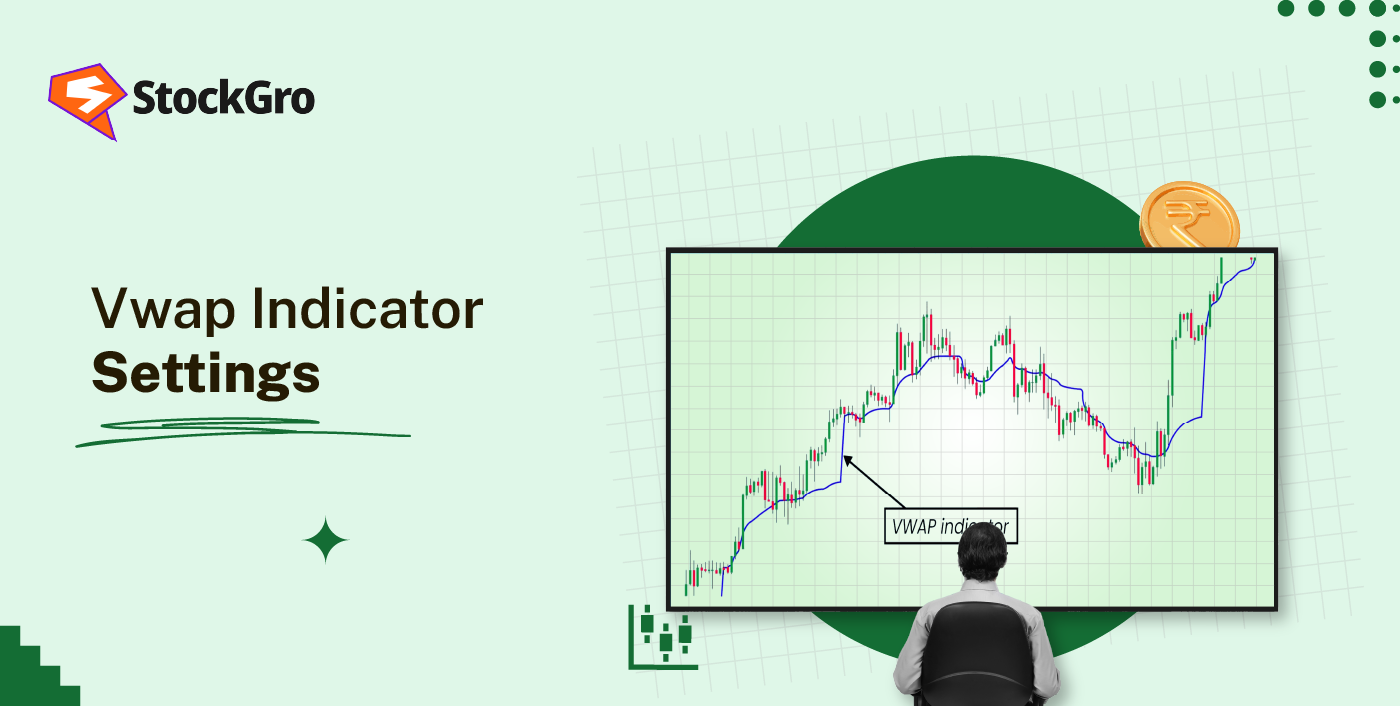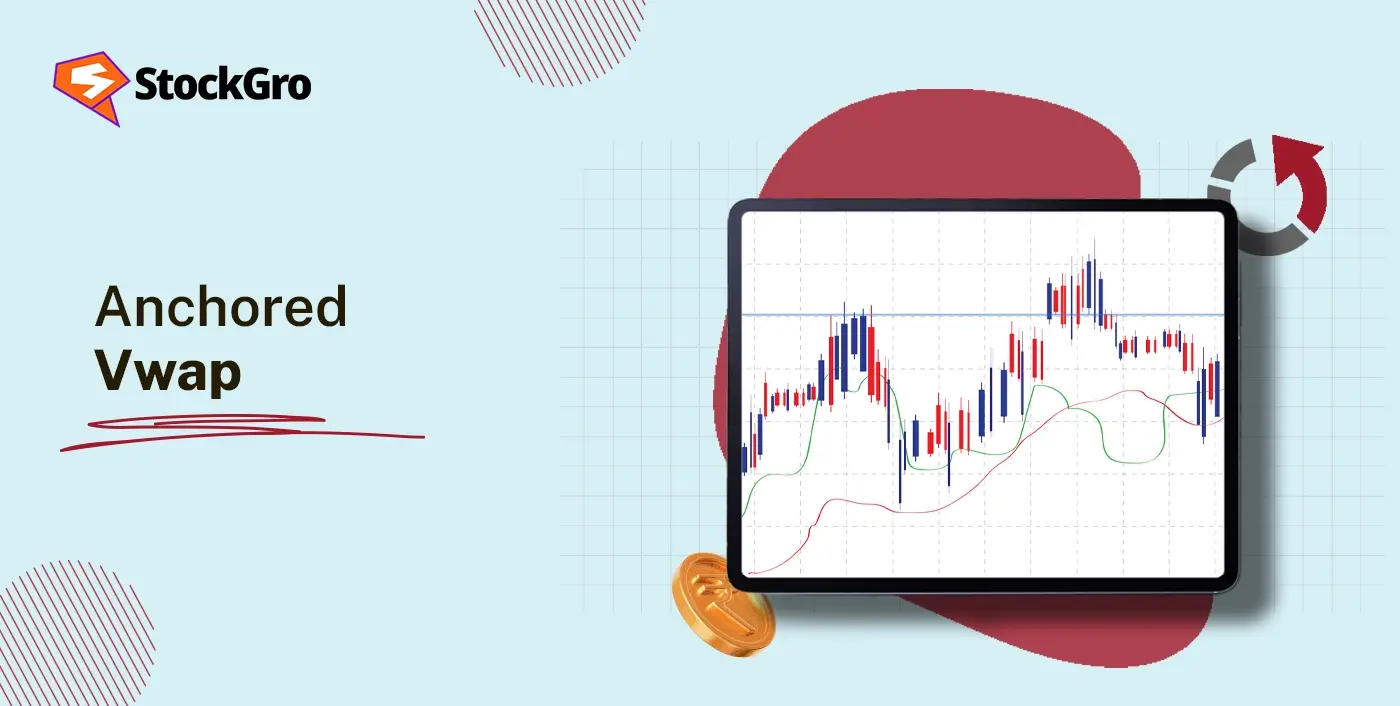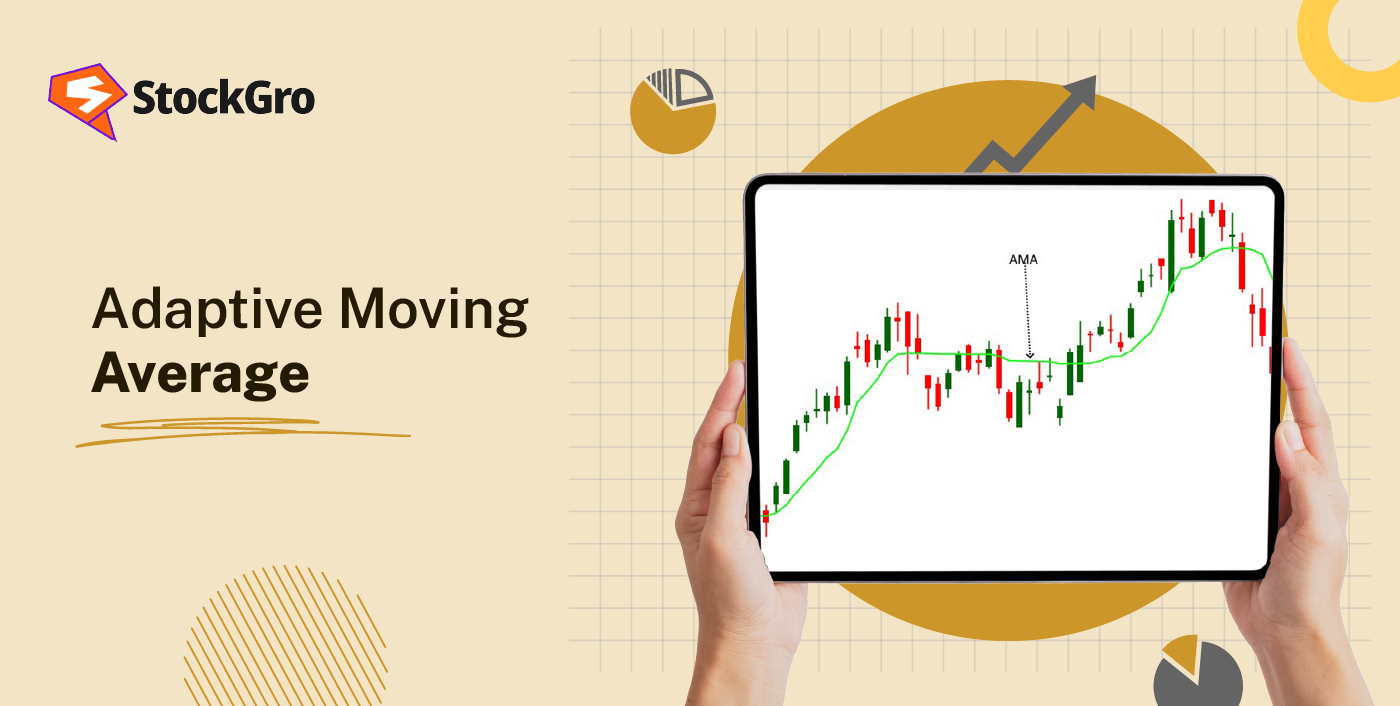
One common issue with intraday indicators is their lack of adaptability and VWAP is no exception. Traders frequently use it straight out of the box, expecting precise guidance. But without optimizing the VWAP indicator setting, signals can become vague or even misleading. In this blog, we will help you learn how to fine-tune and apply VWAP correctly, helping you spot cleaner levels and make more confident trading decisions.
The Volume Weighted Average Price (VWAP) is a technical indicator that shows the average price of a stock, adjusted for the volume traded at each price. The VWAP indicator gives more weight to prices where larger volumes were traded, offering a more accurate view of the day’s average trading price than a simple average. The formula to calculate VWAP is:
VWAP = (Sum of Price × Volume) / Total Volume
VWAP Indicator Settings Explained
The Volume Weighted Average Price (VWAP) indicator settings is choosing the right anchor period, time frame, and source data for the VWAP calculation. The basic setting defines the time period, which can be kept as intraday or changed to weekly, monthly, or even quarterly. Most platforms allow you to set VWAP indicator settings from a specific point instead of the day’s open. You can also add bands around the VWAP line to reflect price range or adjust settings to include or exclude extended trading hours.
VWAP Indicator Settings: How to Use and Customize It for Trading
The main steps for customizing VWAP indicator setting have been discussed below:
- Anchor point: Instead of starting from the session open, VWAP can be set to begin from any chosen moment like a recent high, a news-driven event, or the start of the week so that the line reflects price activity from that point onward.
- VWAP bands: You can add upper and lower bands around the main VWAP line based on standard deviations. These create a channel to track how far price is moving from the average.
- Timeframes and sessions: VWAP can be shown on various chart intervals, and you can choose whether to include pre-market and after-hours data for a more complete view of price movement.
How to Set Up the VWAP Indicator
The core aspects of setting up the VWAP indicator setting include:
- Default settings
On most platforms, VWAP automatically works on intraday charts like 1-minute or 5-minute. It begins at the market open and resets at the start of each trading day without any manual input.
- VWAP periods and timeframes
VWAP is mainly used for intraday analysis, but some platforms let you apply it to custom timeframes. You can anchor VWAP to a specific candle to create weekly or monthly views.
- Intraday settings
You can choose whether to include early morning or late evening trades in the VWAP calculation. Adding this data shows a fuller picture of how the price moved outside regular market hours.
- VWAP for swing trading
To study price behavior over several days, traders use anchored VWAP. This version starts from a fixed point such as a major price low and stays on the chart without resetting daily.
Best VWAP Settings for Intraday Trading
VWAP works best on intraday charts that reset each session. The core VWAP indicator setting to keep in mind are as follows:
- Time frame: VWAP is generally used on intraday timeframes such as 1-minute, 5-minute, or 15-minute charts. It resets at the beginning of each trading day.
- Chart type: It is typically applied on candlestick charts, where the VWAP line appears smooth and helps visualize average pricing.
- Customisation: Platforms allow changes in VWAP’s appearance. Some offer Anchored VWAP, which starts from a chosen event like a news release.
VWAP vs Moving Averages
VWAP and moving averages differ mainly in how they handle volume. Here’s how they differ:
- VWAP reflects daily average price weighted by volume, helping with short-term trading decisions.
- SMA and EMA help smooth price data but do not include volume in the calculation.
- VWAP works well with intraday entries, while moving averages support bigger-picture analysis.
- Combining both allows intraday trades to align with broader price movement.
How to Use VWAP with Other Indicators
Combining VWAP with other indicators can add accuracy and help filter trades. Some useful combinations are:
- VWAP with RSI: RSI measures how strongly price moves over a short period. When RSI shows overbought (above 70) and price is far above VWAP, it may signal an overextension. If both align on the downside, it can indicate a pause in selling strength.
- VWAP with EMA: EMA responds quickly to price changes and is often used to gauge direction. Using a daily EMA with intraday VWAP helps filter trades and look for buys only when price is above both.
- VWAP with MACD: MACD tracks momentum using moving averages. A bullish MACD crossover alongside a break above VWAP adds strength to the setup. This combo can help avoid false signals and improve timing on entries.
Advantages of Using VWAP
The core benefits of using VWAP are as follows:
- VWAP includes volume, so it reflects where actual market activity happened, not just price movement.
- It reduces temporary spikes and dips, offering a clearer view of the day’s price structure.
- It tracks how prices are moving during the day by including volume flow into its calculation.
- VWAP helps traders check how close their trade prices are to the daily average.
- A growing distance between VWAP and price shows stronger control by buyers or sellers.
- Price often reacts at VWAP levels, making it useful for trade planning.
- Watching how volume behaves near VWAP helps confirm strength or weakness in price movement.
- VWAP is used in algorithmic trading as a performance yardstick and is regularly optimized for precision.
Limitations of VWAP
The benefits of VWAP are many but so does its drawbacks, some of which include:
- VWAP changes based on the selected time frame, so results vary on 1-min, 5-min, or daily charts.
- It only factors in volume, missing out on other market data like volatility or price structure.
- It needs detailed trade-by-trade data, which can be hard to access or process in real time.
- Since it averages prices, VWAP often responds slower to sudden reversals.
- For stocks with low trading activity, VWAP becomes less reliable due to inconsistent data.
- Designing or adjusting algorithms using VWAP involves complex parameters and testing.
- VWAP lines can give misleading buy/sell signals if not verified with other data.
Common Mistakes When Using VWAP
VWAP is often misused when treated like a rigid or standalone tool. The most common mistakes when using VWAP are:
- Treating VWAP like a static level: VWAP moves with price and volume, so it can’t be relied on like a hard support or resistance.
- Ignoring volume: VWAP is volume-based. If volume is low, even a break above VWAP might lack strength.
- Overtrading around VWAP: Frequent price action near VWAP doesn’t always mean opportunity. Choppy movement can lead to overtrading and losses.
- Assuming cross means reversal: A price crossing VWAP doesn’t always signal a change in direction.
- Copying without adapting: VWAP usage should match your own trading timeframe and style.
Tips for Adjusting VWAP Settings
Small tweaks can make VWAP easier to read and use. Some useful tips have been given below:
- Use VWAP on shorter timeframes like 1-minute or 5-minute charts for more detailed intraday data.
- Apply it on candlestick charts for clearer reading of price interaction with VWAP.
- Customize the VWAP line style (color, thickness) for better visibility on your chart.
- Consider using Anchored VWAP for specific analysis, starting from major highs, lows, or news-driven moves.
- Pair VWAP with indicators like RSI or EMA for additional confirmation rather than relying on it alone.
Conclusion
Getting the most out of VWAP starts with customising it to your style. Instead of relying on default inputs, adjusting the VWAP indicator setting helps get cleaner setups and avoid false signals. Be it trading breakouts or pullbacks, a well-configured VWAP can make your charts more readable and your decisions more confident. Don’t just use it, customize it to match how you trade.
FAQs
VWAP is best used on intraday charts, as it automatically resets at the start of each trading session. Common timeframes include 1-minute, 5-minute, or 15-minute charts. There are no period settings VWAP calculates from the start of the day to the current time.
To use VWAP with RSI, look for price near VWAP to judge fair value, then check RSI for overbought (above 70) or oversold (below 30) states. A move above VWAP with RSI rising from oversold can signal strength, while price below VWAP with RSI overbought can signal weakness.
VWAP and EMA serve different functions. VWAP calculates a session’s average price with volume weighting and is mainly for intraday use. EMA is a moving average that emphasizes recent price, helpful for trend direction. Each offers unique insights for different strategies.
VWAP should be reset daily for standard intraday use, as it reflects average price in a single trading session. Some platforms allow custom anchor points for other approaches, but for most day trading, resetting at the session start is standard practice.
VWAP does not use fixed periods like moving averages. It accumulates data from the first candle of the session to the current bar. The standard approach is to use session-based, non-period VWAP for intraday trading.

